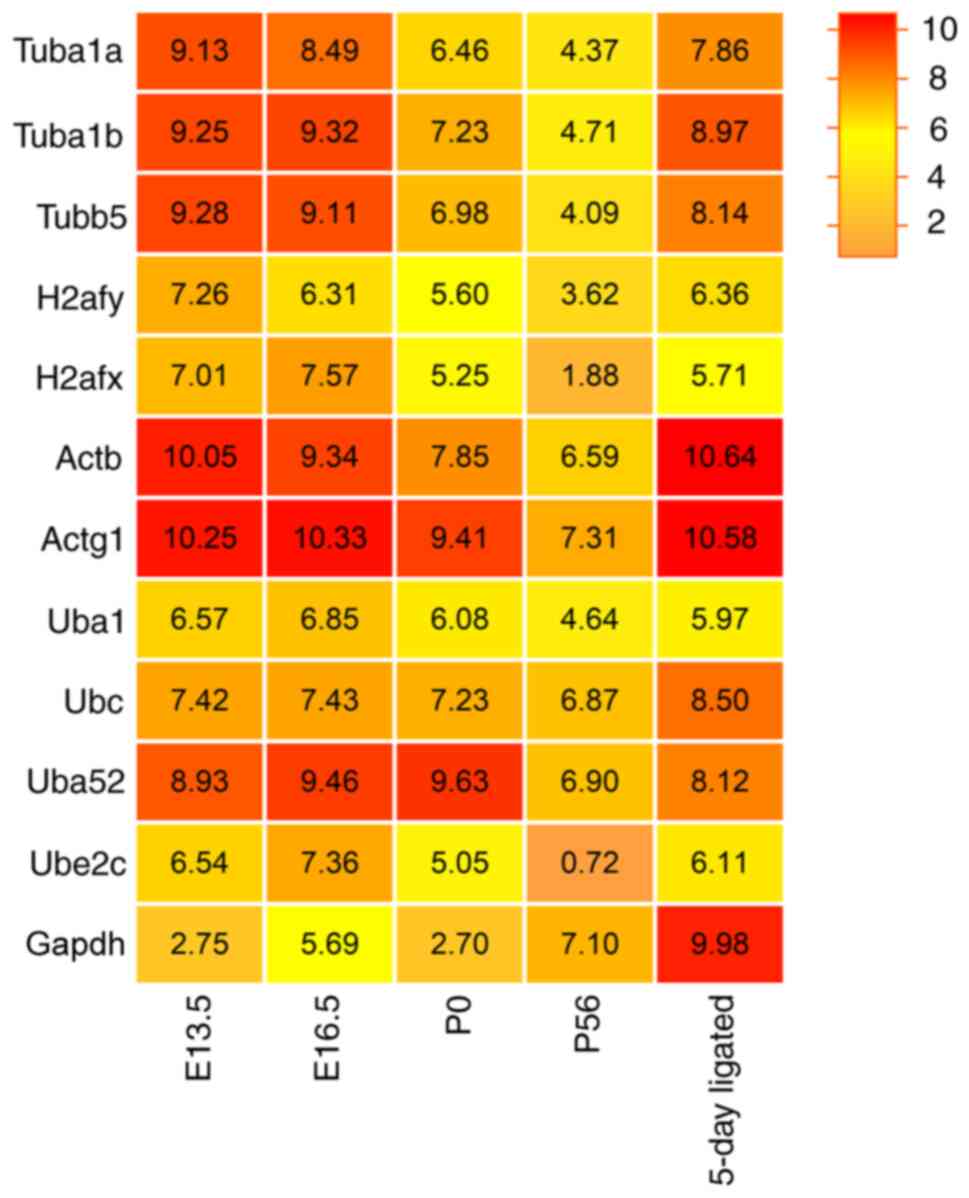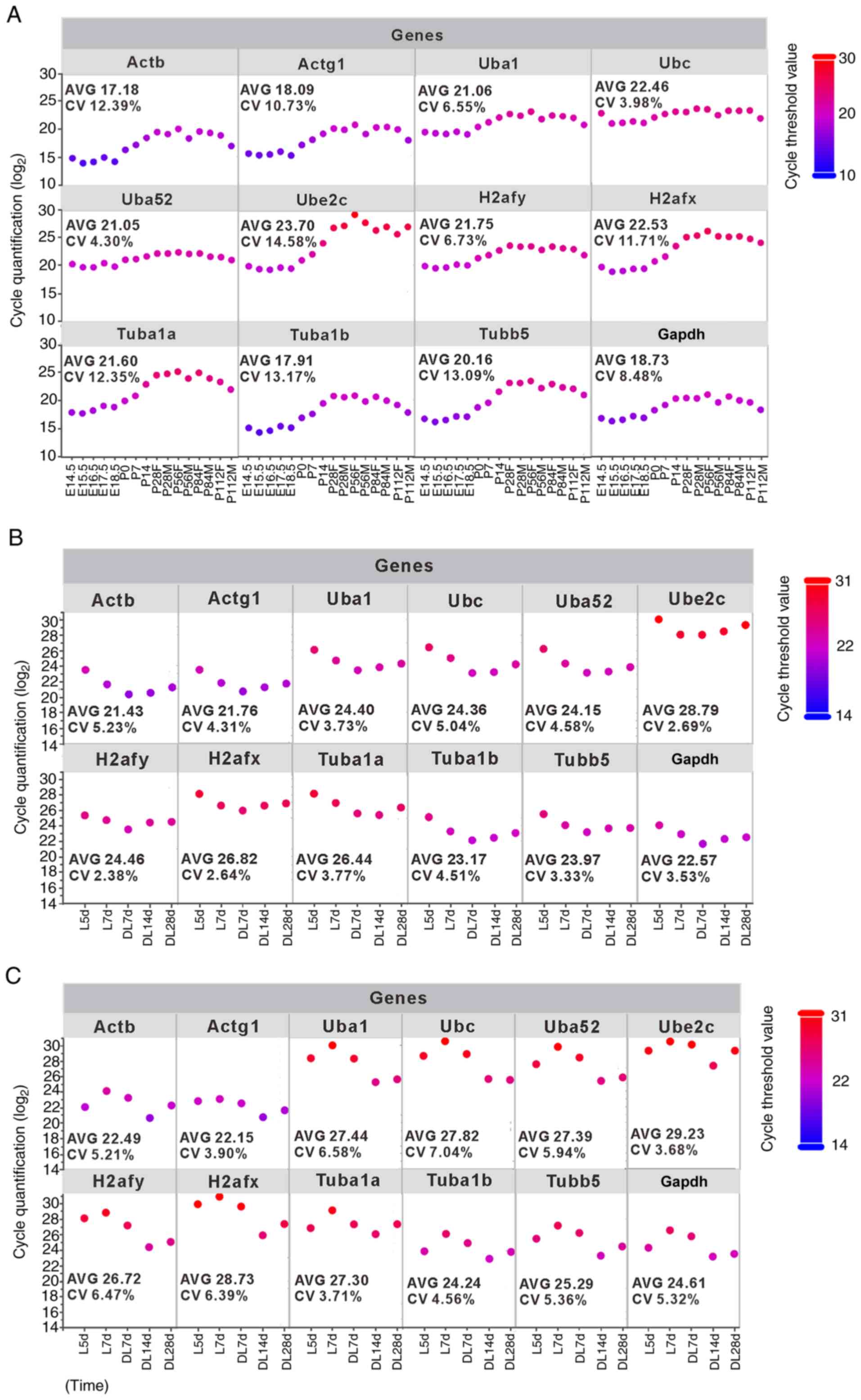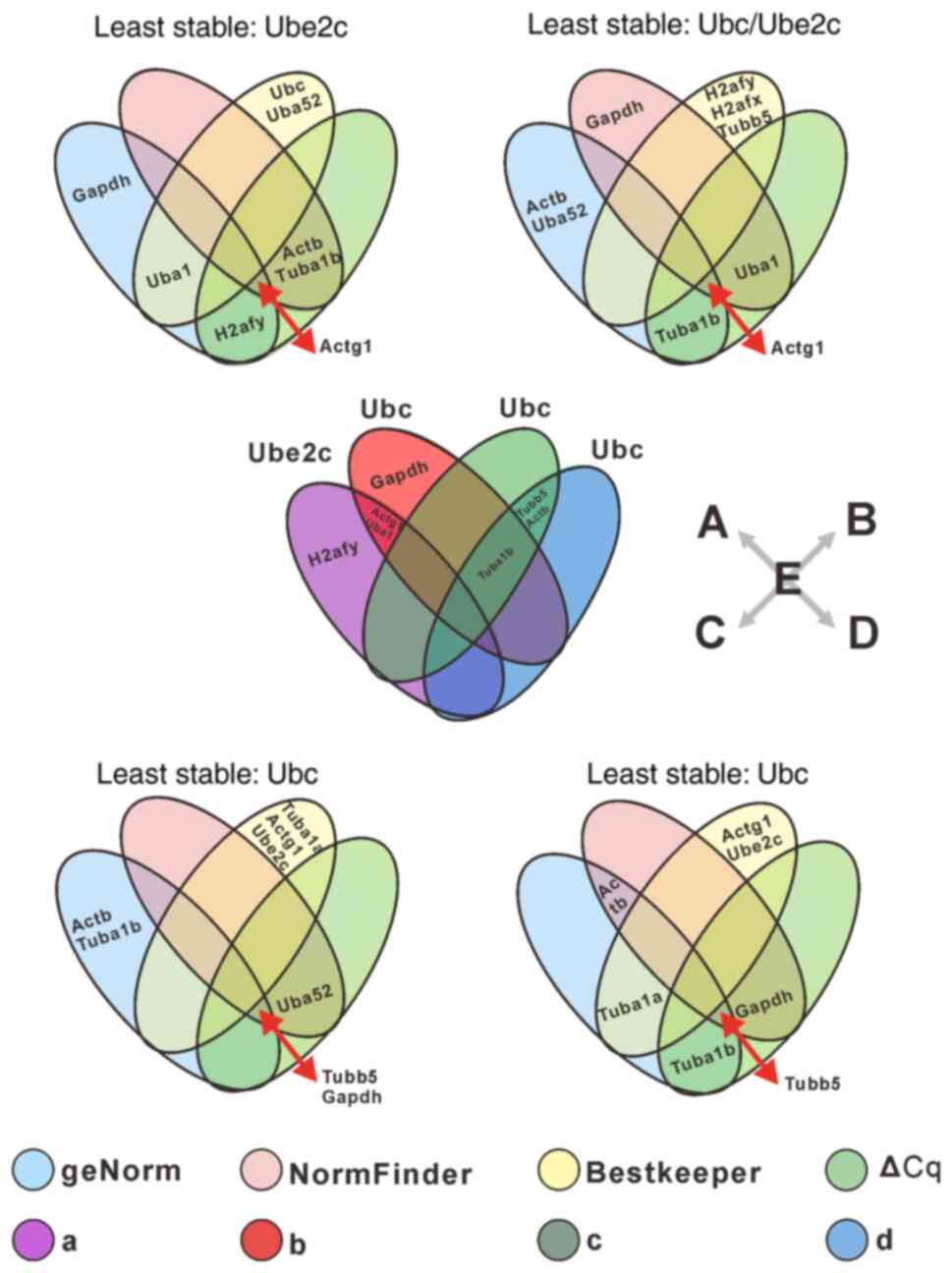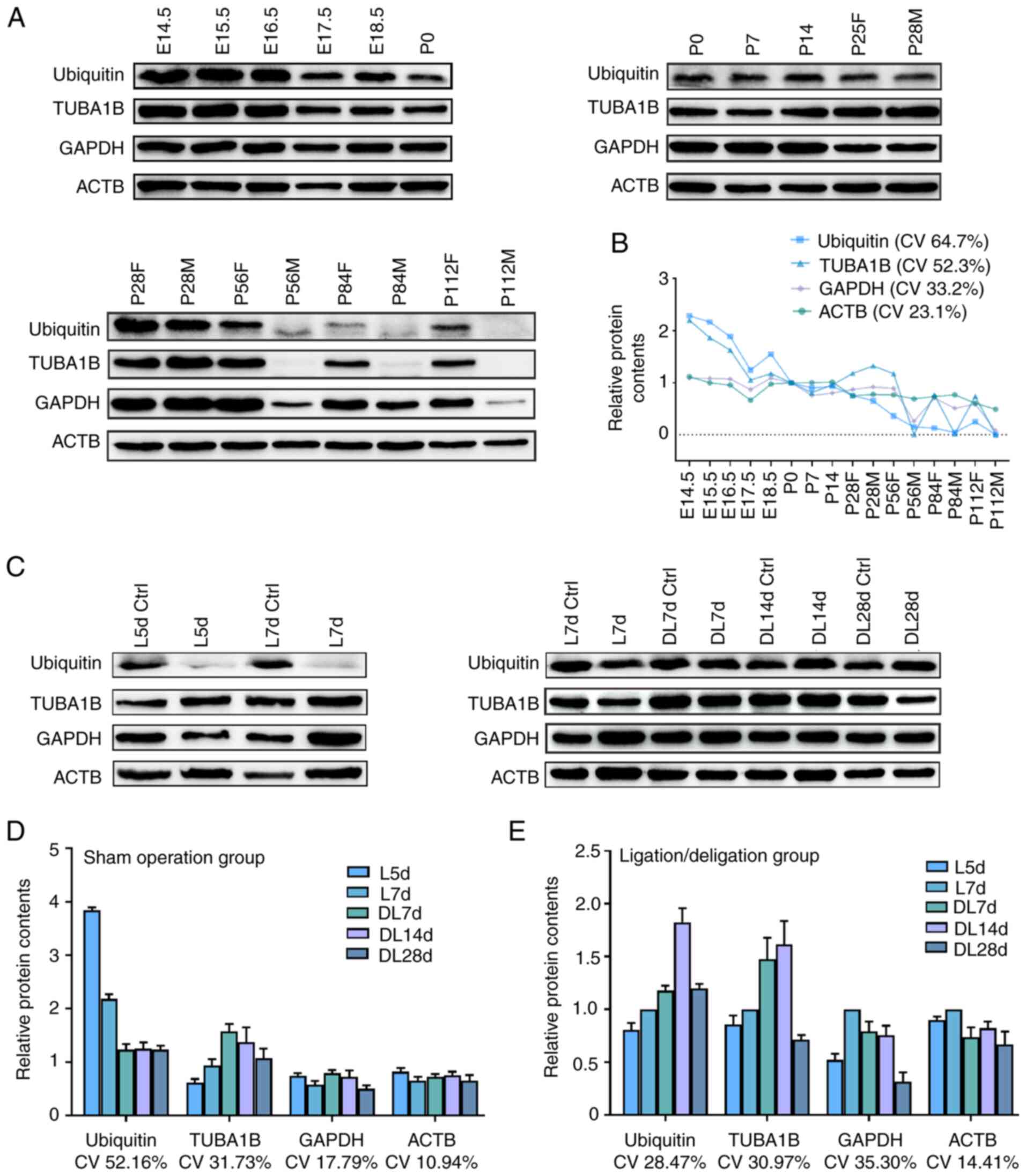|
1
|
Proctor GB: The physiology of salivary
secretion. Periodontol 2000. 70:11–25. 2016. View Article : Google Scholar
|
|
2
|
Emmerson E and Knox SM: Salivary gland
stem cells: A review of development, regeneration and cancer.
Genesis. 56:e232112018. View Article : Google Scholar : PubMed/NCBI
|
|
3
|
Miletich I: Introduction to salivary
glands: Structure, function and embryonic development. Front Oral
Biol. 14:1–20. 2010. View Article : Google Scholar : PubMed/NCBI
|
|
4
|
Hosoi K, Yao C, Hasegawa T, Yoshimura H
and Akamatsu T: Dynamics of salivary gland AQP5 under normal and
pathologic conditions. Int J Mol Sci. 21:11822020. View Article : Google Scholar :
|
|
5
|
Gresik EW, Chung KW, Barka T and Schenkein
I: Immunocytochemical localization of nerve growth factor,
submandibular glands of Tfm/Y mice. Am J Anat. 158:247–250. 1980.
View Article : Google Scholar : PubMed/NCBI
|
|
6
|
Schenck K, Schreurs O, Hayashi K and
Helgeland K: The role of nerve growth factor (NGF) and its
precursor forms in oral wound healing. Int J Mol Sci. 18:3862017.
View Article : Google Scholar :
|
|
7
|
Suzuki A, Ogata K and Iwata J: Cell
signaling regulation in salivary gland development. Cell Mol Life
Sci. 78:3299–3315. 2021. View Article : Google Scholar : PubMed/NCBI
|
|
8
|
Wang Y, Dong J, Li D, Lai L, Siwko S, Li Y
and Liu M: Lgr4 regulates mammary gland development and stem cell
activity through the pluripotency transcription factor Sox2. Stem
Cells. 31:1921–1931. 2013. View Article : Google Scholar : PubMed/NCBI
|
|
9
|
Patel N, Sharpe PT and Miletich I:
Coordination of epithelial branching and salivary gland lumen
formation by Wnt and FGF signals. Dev Biol. 358:156–167. 2011.
View Article : Google Scholar : PubMed/NCBI
|
|
10
|
Hishida S, Ozaki N, Honda T, Shigetomi T,
Ueda M, Hibi H and Sugiura Y: Atrophy of submandibular gland by the
duct ligation and a blockade of SP receptor in rats. Nagoya J Med
Sci. 78:215–227. 2016.PubMed/NCBI
|
|
11
|
Woods LT, Camden JM, El-Sayed FG,
Khalafalla MG, Petris MJ, Erb L and Weisman GA: Increased
expression of TGF-β signaling components in a mouse model of
fibrosis induced by submandibular gland duct ligation. PLoS One.
10:e01236412015. View Article : Google Scholar
|
|
12
|
Tran ON, Wang H, Dean DD, Chen XD and Yeh
CK: Stem cell-based restoration of salivary gland function. A
Roadmap to Nonhematopoietic Stem Cell-Based Therapeutics: From the
Bench to the Clinic. Elsevier; pp. 345–66. 2019, View Article : Google Scholar
|
|
13
|
Shimizu O, Yasumitsu T, Shiratsuchi H, Oka
S, Watanabe T, Saito T and Yonehara Y: Immunolocalization of FGF-2,
-7, -8, -10 and FGFR-1-4 during regeneration of the rat
submandibular gland. J Mol Histol. 46:421–429. 2015. View Article : Google Scholar : PubMed/NCBI
|
|
14
|
Baum BJ, Alevizos I, Chiorini JA, Cotrim
AP and Zheng C: Advances in salivary gland gene therapy - oral and
systemic implications. Expert Opin Biol Ther. 15:1443–1454. 2015.
View Article : Google Scholar : PubMed/NCBI
|
|
15
|
González CR, Amer MA, Vitullo AD,
González-Calvar SI and Vacas MI: Immunolocalization of the TGFB1
system in submandibular gland fibrosis after experimental
periodontitis in rats. Acta Odontol Latinoam. 29:138–143.
2016.PubMed/NCBI
|
|
16
|
Hai B, Zhao Q, Qin L, Rangaraj D, Gutti VR
and Liu F: Rescue effects and underlying mechanisms of intragland
shh gene delivery on irradiation-induced hyposalivation. Hum Gene
Ther. 27:390–399. 2016. View Article : Google Scholar : PubMed/NCBI
|
|
17
|
Wang B, Duan H, Chong P, Su S, Shan L, Yi
D, Wang L and Li Y: Systematic selection and validation of suitable
reference genes for quantitative real-time PCR normalization
studies of gene expression in Nitraria tangutorum. Sci Rep.
10:158912020. View Article : Google Scholar : PubMed/NCBI
|
|
18
|
Yang NY, Mukaibo T, Kurtz I and Melvin JE:
The apical Na+-HCO3− cotransporter
Slc4a7 (NBCn1) does not contribute to bicarbonate transport by
mouse salivary gland ducts. J Cell Physiol. 10:10022019.
|
|
19
|
Tanaka J, Ogawa M, Hojo H, Kawashima Y,
Mabuchi Y, Hata K, Nakamura S, Yasuhara R, Takamatsu K, Irié T, et
al: Generation of orthotopically functional salivary gland from
embryonic stem cells. Nat Commun. 9:42162018. View Article : Google Scholar : PubMed/NCBI
|
|
20
|
Zhang Y, Fan J, Sun J, Francis F and Chen
J: Transcriptome analysis of the salivary glands of the grain
aphid, Sitobion avenae. Sci Rep. 7:159112017. View Article : Google Scholar : PubMed/NCBI
|
|
21
|
Ruan W and Lai M: Actin, a reliable marker
of internal control? Clin Chim Acta. 385:1–5. 2007. View Article : Google Scholar : PubMed/NCBI
|
|
22
|
Bunnell TM, Burbach BJ, Shimizu Y and
Ervasti JM: β-actin specifically controls cell growth, migration,
and the G-actin pool. Mol Biol Cell. 22:4047–4058. 2011. View Article : Google Scholar : PubMed/NCBI
|
|
23
|
Guo C, Liu S, Wang J, Sun MZ and Greenaway
FT: ACTB in cancer. Clin Chim Acta. 417:39–44. 2013. View Article : Google Scholar
|
|
24
|
Binarová P and Tuszynski J: Tubulin:
Structure, functions and roles in disease. Cells. 8:12942019.
View Article : Google Scholar :
|
|
25
|
Nicholls C, Li H and Liu JP: GAPDH: A
common enzyme with uncommon functions. Clin Exp Pharmacol Physiol.
39:674–679. 2012. View Article : Google Scholar
|
|
26
|
Seidler NW: Basic biology of GAPDH. Adv
Exp Med Biol. 985:1–36. 2013. View Article : Google Scholar
|
|
27
|
Zhang JY, Zhang F, Hong CQ, Giuliano AE,
Cui XJ, Zhou GJ, Zhang GJ and Cui YK: Critical protein GAPDH and
its regulatory mechanisms in cancer cells. Cancer Biol Med.
12:10–22. 2015.PubMed/NCBI
|
|
28
|
Chen ZJ and Sun LJ: Nonproteolytic
functions of ubiquitin in cell signaling. Mol Cell. 33:275–286.
2009. View Article : Google Scholar : PubMed/NCBI
|
|
29
|
Livak KJ and Schmittgen TD: Analysis of
relative gene expression data using real-time quantitative PCR and
the 2(-Delta Delta C(T)) method. Methods. 25:402–408. 2001.
View Article : Google Scholar
|
|
30
|
Ramakers C, Ruijter JM, Deprez RH and
Moorman AF: Assumption-free analysis of quantitative real-time
polymerase chain reaction (PCR) data. Neurosci Lett. 339:62–66.
2003. View Article : Google Scholar : PubMed/NCBI
|
|
31
|
Vandesompele J, De Preter K, Pattyn F,
Poppe B, Van Roy N, De Paepe A and Speleman F: Accurate
normalization of real-time quantitative RT-PCR data by geometric
averaging of multiple internal control genes. Genome Biol.
3:RESEARCH00342002. View Article : Google Scholar : PubMed/NCBI
|
|
32
|
Andersen CL, Jensen JL and Ørntoft TF:
Normalization of real-time quantitative reverse transcription-PCR
data: A model-based variance estimation approach to identify genes
suited for normalization, applied to bladder and colon cancer data
sets. Cancer Res. 64:5245–5250. 2004. View Article : Google Scholar : PubMed/NCBI
|
|
33
|
Pfaffl MW, Tichopad A, Prgomet C and
Neuvians TP: Determination of stable housekeeping genes,
differentially regulated target genes and sample integrity:
BestKeeper-excel-based tool using pair-wise correlations.
Biotechnol Lett. 26:509–515. 2004. View Article : Google Scholar : PubMed/NCBI
|
|
34
|
Xie F, Xiao P, Chen D, Xu L and Zhang B:
miRDeepFinder: A miRNA analysis tool for deep sequencing of plant
small RNAs. Plant Mol Biol. 31:10072012.
|
|
35
|
Chatzeli L, Teshima THN, Hajihosseini MK,
Gaete M, Proctor GB and Tucker AS: Comparing development and
regeneration in the submandibular gland highlights distinct
mechanisms. J Anat. 238:1371–1385. 2021. View Article : Google Scholar : PubMed/NCBI
|
|
36
|
Gresik EW: Postnatal developmental changes
in submandibular glands of rats and mice. J Histochem Cytochem.
28:860–870. 1980. View Article : Google Scholar : PubMed/NCBI
|
|
37
|
Srinivasan R and Chang WW: The development
of the granular convoluted duct in the rat submandibular gland.
Anat Rec. 182:29–39. 1975. View Article : Google Scholar : PubMed/NCBI
|
|
38
|
Borkowska P, Zielińska A, Paul-Samojedny
M, Stojko R and Kowalski J: Evaluation of reference genes for
quantitative real-time PCR in Wharton's Jelly-derived mesenchymal
stem cells after lentiviral transduction and differentiation. Mol
Biol Rep. 47:1107–1115. 2020. View Article : Google Scholar
|
|
39
|
Li Z, Lu H, He Z, Wang C, Wang Y and Ji X:
Selection of appropriate reference genes for quantitative real-time
reverse transcription PCR in Betula platyphylla under salt and
osmotic stress conditions. PLoS One. 14:e02259262019. View Article : Google Scholar : PubMed/NCBI
|
|
40
|
Wu Y, Tian Q, Huang W, Liu J, Xia X, Yang
X and Mou H: Identification and evaluation of reference genes for
quantitative real-time PCR analysis in Passiflora edulis under stem
rot condition. Mol Biol Rep. 47:2951–2962. 2020. View Article : Google Scholar : PubMed/NCBI
|
|
41
|
Zhu J, Zhang L, Li W, Han S, Yang W and Qi
L: Reference gene selection for quantitative real-time PCR
normalization in Caragana intermedia under different abiotic stress
conditions. PLoS one. 8:e531962013. View Article : Google Scholar : PubMed/NCBI
|
|
42
|
Li J, Han X, Wang C, Qi W, Zhang W, Tang L
and Zhao X: Validation of suitable reference genes for RT-qPCR data
in achyranthes bidentata blume under different experimental
conditions. Front Plant Sci. 8:7762017. View Article : Google Scholar :
|
|
43
|
Deindl E, Boengler K, van Royen N and
Schaper W: Differential expression of GAPDH and beta3-actin in
growing collateral arteries. Mol Cell Biochem. 236:139–146. 2002.
View Article : Google Scholar : PubMed/NCBI
|
|
44
|
Suzuki T, Higgins PJ and Crawford DR:
Control selection for RNA quantitation. Biotechniques. 29:332–337.
2000. View Article : Google Scholar : PubMed/NCBI
|
|
45
|
Silver N, Cotroneo E, Proctor G, Osailan
S, Paterson KL and Carpenter GH: Selection of housekeeping genes
for gene expression studies in the adult rat submandibular gland
under normal, inflamed, atrophic and regenerative states. BMC Mol
Biol. 9:642008. View Article : Google Scholar : PubMed/NCBI
|
|
46
|
Chen L, Zhong HY, Kuang JF, Li JG, Lu WJ
and Chen JY: Validation of reference genes for RT-qPCR studies of
gene expression in banana fruit under different experimental
conditions. Planta. 234:377–390. 2011. View Article : Google Scholar : PubMed/NCBI
|
|
47
|
Cheng Y, Bian W, Pang X, Yu J, Ahammed GJ,
Zhou G, Wang R, Ruan M, Li Z, Ye Q, et al: Genome-wide
identification and evaluation of reference genes for quantitative
RT-PCR analysis during tomato fruit development. Front Plant Sci.
8:14402017. View Article : Google Scholar : PubMed/NCBI
|
|
48
|
Costa J, Saraiva K, Morais V, Oliveira J,
Sousa D, Melo D, Morais J and Vasconcelos I: Reference gene
identification for real-time PCR analyses in soybean leaves under
fungus (Cercospora kikuchii) infection and treatments with
salicylic and jasmonic acids. Australasian Plant Pathology.
45:191–199. 2016. View Article : Google Scholar
|
|
49
|
Zhang Y, Peng X, Liu Y, Li Y, Luo Y, Wang
X and Tang H: Evaluation of suitable reference genes for qRT-PCR
normalization in strawberry (Fragaria x ananassa) under different
experimental conditions. BMC Mol Biol. 19:82018. View Article : Google Scholar
|
|
50
|
Herath S, Dai H, Erlich J, Au AY, Taylor
K, Succar L and Endre ZH: Selection and validation of reference
genes for normalisation of gene expression in ischaemic and
toxicological studies in kidney disease. PLoS One. 15:e02331092020.
View Article : Google Scholar : PubMed/NCBI
|
|
51
|
Matsuzaki T, Suzuki T, Koyama H, Tanaka S
and Takata K: Aquaporin-5 (AQP5), a water channel protein, in the
rat salivary and lacrimal glands: Immunolocalization and effect of
secretory stimulation. Cell Tissue Res. 295:513–521. 1999.
View Article : Google Scholar : PubMed/NCBI
|
|
52
|
Hauser BR and Hoffman MP: Regulatory
mechanisms driving salivary gland organogenesis. Curr Top Dev Biol.
115:111–130. 2015. View Article : Google Scholar : PubMed/NCBI
|
|
53
|
Li C, Hu L, Wang X, Liu H, Tian H and Wang
J: Selection of reliable reference genes for gene expression
analysis in seeds at different developmental stages and across
various tissues in Paeonia ostii. Mol Biol Rep. 46:6003–6011. 2019.
View Article : Google Scholar : PubMed/NCBI
|
|
54
|
Dos Santos CP, da Cruz Saraiva KD, Batista
MC, Germano TA and Costa JH: Identification and evaluation of
reference genes for reliable normalization of real-time
quantitative PCR data in acerola fruit, leaf, and flower. Mol Biol
Rep. 47:953–965. 2020. View Article : Google Scholar
|
|
55
|
Wang X, Wu Z, Bao W, Hu H, Chen M, Chai T
and Wang H: Identification and evaluation of reference genes for
quantitative real-time PCR analysis in Polygonum cuspidatum based
on transcriptome data. BMC Plant Biol. 19:4982019. View Article : Google Scholar : PubMed/NCBI
|




















